#mycorrhizal
Text
One of my recent Rainy Rambles columns is an introduction to the "Wood Wide Web", that intricate mycorrhizal relationship among soil fungi and plant roots. It's a quick read that just hits the highlights, but it's a good starting point for those unfamiliar with the concept. Enjoy :)
#trees#Wood Wide Web#mycorrhizal#plants#botany#fungi#fungus#mushrooms#mycology#soil microbiome#soil#forest#ecology#nature
41 notes
·
View notes
Text
Mycorrhizal - Blessed Be the Match (full EP, 2024)

youtube
Today is a day of resistance and struggle for the Antifascist Black Metal Network. Well, every day is one in truth, really, but today has the special symbolism of being March 8th, the International Day of the Struggle of Women Workers, a day that celebrates the February Russian Revolution of 1917 where women led textile strike toppled the czar. And today, as Palestinian and Ukrainian women strike back against imperialism and colonialism, as trans women in the West fight genocide, from Wallmapu to Manipur, from Myanmar to Saharaui, we want to add to that fire of revolt - and we do that with the newest release of the already familiar Mycorrhizal, from Winconsin, US. Aptly titled "Blessed Be The Match", this EP defies easy classification; we can say, though, that Christine's experimentation, which have never been bound to black metal, now have gone waaaay beyond our namesake genre, landing somewhere between ambient, trap/hip-hop, and harsher but still danceable electronic music, in what could be described perhaps as "Grendel meets shrieked rap". May we burn to the ground this world that destroys us, along with its agents like Antideutsche and TERFs! From the spark, let the plain rise up in flames!
#ABMN#RABM#antifascistblackmetal#mycorrhizal#experimentalblackmetal#electronic#greenblackmetal#blackmetal#Youtube
11 notes
·
View notes
Text
Roots of Resilience: Celebrating World Soil Day with Tree Planting and Forests
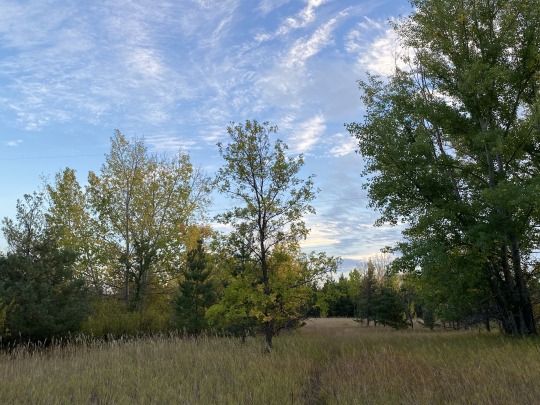
View On WordPress
#anchor#biodiversity#CARBON#desertification#earthworms#fertilizer#filters#Friends of the Saskatoon Afforestation Areas#fungi#George Genereux Urban REgional Park#life#microbial#mycorrhizal#organisms#resilient#Richard St. Barbe Baker#Richard St. Barbe Baker AFforestation ARea#roots#Saskatchewan#Saskatoon#shelterbelt#soil#soil resources#symbiotic#tree surivival#vegetation#water#wind#World Soil Day
0 notes
Text
An attempt at summarizing the controversies that embroil mycorrhizal network research:
a bunch of scientists are miffed at how the media has taken "plants communicate and distribute nutrients through the mycorrhizal network" and run with it, finding the "mother tree" thing too anthropomorphizing and too presumptive about something very poorly understood
unfortunately all of the major models for understanding the mycorrhizal network are anthropomorphizing, even the more competition-centered ones...to the point that papers discuss whether the network is a "capitalist" or a "socialist" system
other researchers, screaming STOP USING LOADED TERMS THAT PROMOTE AN ANTHROPOCENTRIC INTERPRETATION
But, setting aside the question of whether trees can "intentionally" do something or be altruistic...how do we know the plant is the one in control? Are the trees "sending" nutrients or is the fungus taking the nutrients and sending them to other trees? Wait, how do we assign agency in a system like this at all? Isn't it unscientific to assume that any part of the system, fungus or plant, is consciously acting? Wait...are they actually separate organisms with their own interests, or is it more accurate to view all the members of a mycorrhizal network as one big super-organism? (Wait, is it anthropomorphizing to consider organisms as having interests? If yes, how do we describe what's happening using language?)
Basically, yes we have demonstrated and established that nutrients move from one plant to another plant in the mycorrhizal network, including from fully grown trees to saplings, plants in sunlight to shaded plants, and other things that are definitely fun to interpret as one plant "helping" the weaker plant. However, we don't actually know the intentions of plants, so for all we know, the fungus could be doing everything. Or it could be completely stupid to describe any of it as "one individual organism in the network Intentionally Does A Thing."
Big Problem: Although a shit ton of research is being done, most research in the mycorrhizal network is done on very simple networks of 1 or 2 plant species with a handful of selected fungal inoculants in otherwise sterile laboratory settings. These conditions do not reflect the natural world at all.
in fact, experimental conditions used to study mycorrhizal networks are mostly completely unlike anything that would ever exist...you know, Outside,
most of the research pertains to agriculture and there are many demonstrated benefits, and many farmers are ALREADY using methods to promote mycorrhizal networks, but my guess is that it's not as simple as matching crops up to fungal inoculants that help them for instant 20% yield increase, at least in Real Outdoor Soil with an existing microbiome and seed bank.
Roughly speaking, 50% of mycorrhizal associations benefit seedling establishment, and the remaining 50% are themselves split halfway between "no effect" and "negative effect." Doesn't this mean that the mycorrhizal network is not always chill and altruistic?
Well, those findings might mean absolutely nothing either way, since in a field-setting plant community, there are dozens if not hundreds of fungi species (the diversity and number of specialists increases in later-successional communities) that are part of the mycorrhizal network, and through them any given seedling might be linked to a thousand different plants.
Some researchers find it puzzling how so many mycorrhizal partnerships seem to have no effect. Maybe the effect only comes online in certain conditions?
Parasitism, mutualism and commensalism aren't fixed types of relationship, and two partners in the mycorrhizal network can and do switch between the three constantly. This is another problem: the experiments don't usually follow both partners in a plant-fungal pairing to the end of their natural lives, and it's been shown that a fungus can be mutualistic early in a plant's life and later on become more parasitic (for example). Or that a fungus can be beneficial in poor soil conditions and become parasitic in rich soil conditions.
But...is this really best understood as a situational switch between types of symbiosis, or can we judge it by the net effect on both partners throughout their life spans, or...my brain is breaking
Like, a fungus that mostly decreases the fitness of the host plant, BUT becomes very helpful in the presence of extreme drought...is it a parasite or mutualistic partner?
Some researchers lean toward a source-sink model where nutrients tend to flow toward plants that are most lacking and away from plants with most abundance. This is a rough approximation of something ridiculously complicated
Plants can and do select fungal partners to pair with and reject fungi that contribute fewer benefits.
Fungi also appear capable of selectively distributing resources based on the fitness of the host, or at least they did this one experiment where the fungus was connected to two different trees and researchers ripped all the leaves off one of the trees. This caused the fungus to divert its nutrient flow to the undamaged tree (throwing in its lot with the tree most likely to survive). However, we're not sure if this would happen in a forest or other natural plant community, since in the lab, the fungus was totally dependent on the two trees for survival and there were no other participants in the network. So basically, it's kinda like those behavior studies on captive wolves?
4K notes
·
View notes
Photo
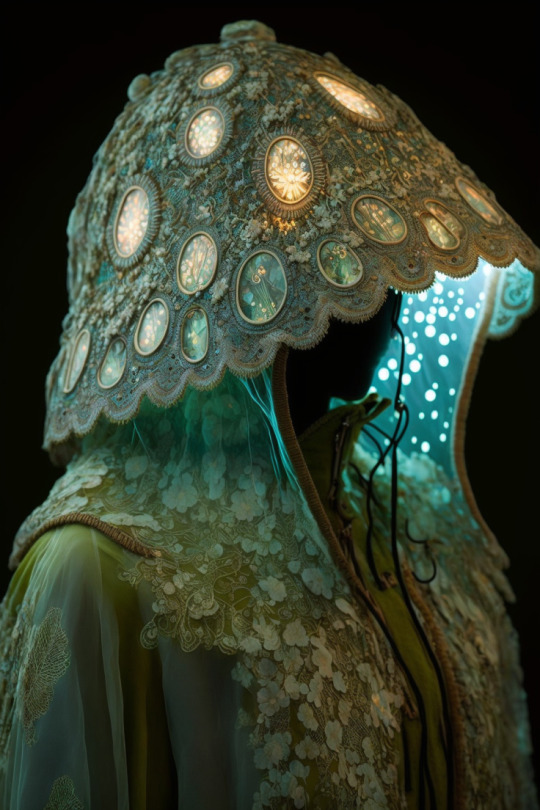





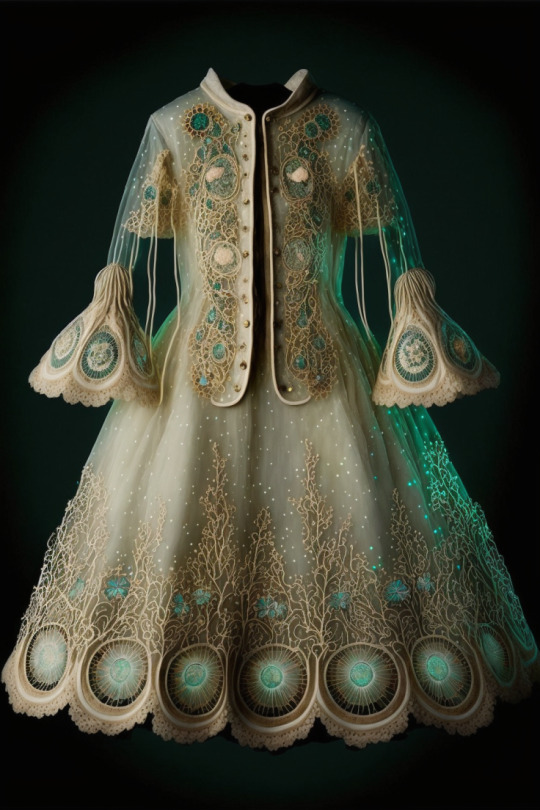
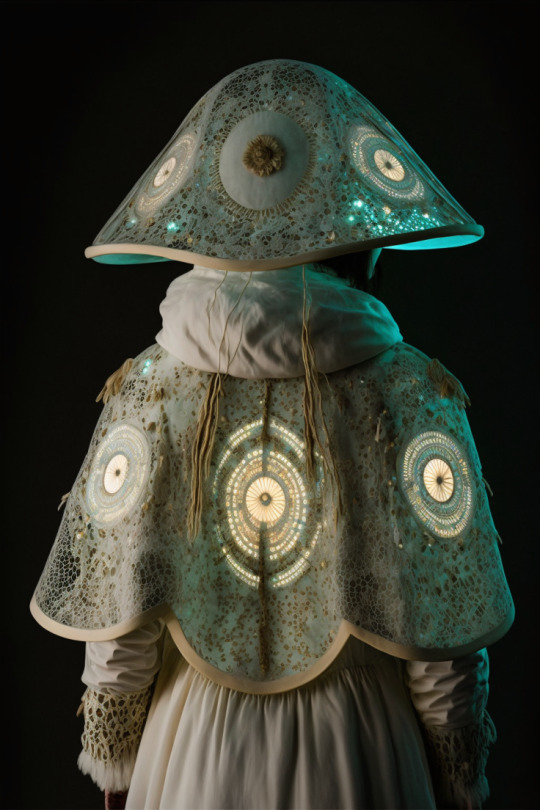
MYCORRHIZA GOWNS & COATS
nonexistent ai clothing ideas - secret power mittens
#mycorrhizal network#fungi#mycelium#mushrooms#ai#design#ideas#ideation#ai ideas#ai clothing#clothing#gown#nightgown#gowns#coats#petticoats#modularsynesthesia#night#wear#lingerie#clothes#fabric#led fabric#imaginary#gifts#prototype#unreal for now#synth clothing#aesthetic#dark academia
8K notes
·
View notes
Text
my economics professor mentioned that my state's old growth logging ban was lifted (in a positive tone) and i already didn't like her but i almost went apeshit istg. @headspace-hotel's posts actually changed my brain chemistry. i rambled to a few classmates about them afterwards and went into a research spiral for half the afternoon too. i'm so angry that i'll never see them. i'll never be able to walk on six inches of topsoil. i'll be lucky to walk on one. economics are a joke i want my goddamn earth back
#old growth forests#mycorrhizal fungi#mycelium#topsoil#sorry for the @ headspace im just very angry right now and you were the main factor making me understand enough to be angry about it
6K notes
·
View notes
Text

Mycorrhizal network ᨒ↟.ೃ࿔*:・(Funguary Day 23)
99 notes
·
View notes
Text
Lomwé and Macua communities in Mozambique’s Zambezia province traditionally harvest wild mushrooms to eat alongside staples like cassava. Conservationists are working with hundreds of indigenous women there to commercialize the sale of mushrooms like the vivid orange Eyukuli (Cantharellus platyphyllus) as part of a wider strategy to protect forests surrounding Gilé National Park.
The mushrooms are harvested in a 55,600-hectare (137,400-acre) buffer zone surrounding the national park during the height of the Southern African country’s wet season, from November to April. After harvesting, the fungi are cleaned, dried, and transported by road to Maputo, the capital, more than 2,000 kilometers (1,200 miles) away. There, they’re packaged and sold under the trade name Supa Mama.
This is the first time that native Mozambican mushrooms have been commercialized in the country.
Gilé covers an area of 286,100 hectares (707,000 acres), much of this covered in miombo woodlands that include tree species, like those from the Brachystegia genus, whose roots host mycorrhizal fungi. These underground networks help the trees absorb nutrients and moisture, and announce their presence in the form of diverse fruiting bodies above the ground: mushrooms.
Providing an economic incentive to protect the trees could be key to leaving them standing while promoting the wild mushroom harvest, says Alessandro Fusari...
Communities living around Gilé harvest at least 46 species of mushroom for local consumption. These include eyukuli, the trumpet-shaped khaduve (Lactifluus edulis), and the broad-capped namapele (Lactarius densifolius). So far, a total of five species are being harvested and packed for commercial sale under the project.

Pictured: Cantharellus platyphyllus (called Eyukuli in Lomwé) is one of 46 wild mushroom species Indigenous women harvest.
“Slowly, the community, especially the women, are learning that keeping the trees standing means having a bigger production of mushrooms,” Fusari tells Mongabay. “Since they’re starting to see commercial results, more and more avoid cutting trees.”
The project, which is supported by the French Development Agency, is in its third year, meaning the team doesn’t yet have the hard data to determine its success. But, Fusari says, the reduction in tree cutting “is a clear trend that is happening.”
Mushroom harvesting around Gilé is typically done by women while out doing other tasks, such as gathering firewood. The mushroom project works with 900 or so members of 30 women’s groups drawn from communities living in the national park’s buffer zone.
Gilé National Park is home to animals that include buffalo, wildebeest, sable, waterbuck, and around 50 elephants. Many of these animals were reintroduced from other areas to rebuild the wildlife wiped out during Mozambique’s 1977-1992 civil war.
...Giving commercial value to something normally only collected for subsistence is part of a wider program to promote sustainable agriculture...
The teams collecting mushrooms have already been trained in sustainable harvesting methods. For instance, they cut rather than pull the mushrooms from the ground, to avoid damaging the mycelium, or root-like structure, beneath the surface; they brush the dirt off the mushrooms wherever they pick them, to leave as many spores there as possible; and the women carry their harvest home in open baskets, to allow spore dispersal along the way.
-via Good News Network, October 14, 2023. Based on reporting by Mongabay News, September 1, 2023.
#mozambique#mozambican#conservation#sustainability#national park#forest#forest conservation#mushrooms#fungi#wild fungi#mycorrhizal fungi#mycorrhizal network#sustainable agriculture#agriculture#good news#hope#mycelium#mushroom hunting#mycology#deforestation#also very cool info about sustainable mushroom harvesting tbh
223 notes
·
View notes
Text
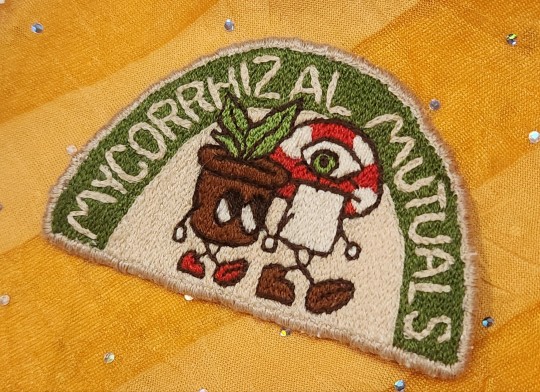
Have you ever walked through an evergreen forest to clear your mind? Eaten a nice warm vegetable stew? Received flowers from someone you love? Well... thank our hidden hero:
Arbuscular Mycorrhizal Fungi!
Hidden beneath your feet, nestled away inside the roots of 80-90% of vascular plants, there is a complex network of hyphae working in tandem with their plant buddies to keep our ecosystems alive and thriving!
Essentially, these microscopic fungi give plants Super Tolerance. Hyphae are much smaller than roots, which means that they can reach out farther while expending less energy and worm their way into places that are normally inaccessible to plants. This allows vascular plants to access more mineral nutrients than they normally could on their own. These fun-guys are so effective that some plants can even live their lives completely achlorophyllic (without chlorophyll)!
In return, plants will partition some of the carbon and simple sugars produced from photosynthesis to give to their buddies. This is done through vesicles formed by hyphae in the plant cells.
This isn't anything new either! In fact, you might even thank AMF for plants migrating onto land at all. A popular hypothesis for the colonization of land by plants is that the first vascular plants formed from an ancient partnership between algae and fungi, where essentially the fungi would act as the algae's roots to collect nutrients not available to the algae alone outside the water. If you'd like to see a cool example, look up the Rhynie chert!!
Thank you for letting me ramble a while at you about my favorite organisms on this planet :•) I encourage all of you to do some more research on your own, there is a TON that I haven't covered here! If you have access to a microscope, you can even dissect and stain some common garden roots to say hello to these little buddies yourself!
[This piece is directly inspired by the work of @/byjacobparis on Instagram! Please go give him a follow :•) ]
#i think this is one of my favorite patches that ive done :•)#and YES they are gay#fungi#mycorrhizal fungi#arbuscular mycorrhizal fungi#plants#botany#mycology#mutualism#symbiosis#biology#embroidery#hand embroidery#patch#needlework#i should also note that they dont form fruiting bodies as far as im aware!!#the fly agaric on the patch is just an aesthetic choice lol
145 notes
·
View notes
Text
I don’t want to be a person- I want to be part of a mycelial network composed of hyphae that are just all of my favorite mutuals.
just me and my girls hanging out. transporting nutrients. forming fruiting bodies. creating mycorrhizal networks. Thats the dream
💭🧚🏼🍄🦠🔬🍄🟫🦋🌿🤞🏻
#mycelium#mycelial network#fungi#nature#upload#mine#mushrooms#hyphae#mycellium#me#text#mycology#mycelia#fruiting bodies#mycophile#mycorrhizal network#earth#fungus
35 notes
·
View notes
Text
Okay. This is a pretty big deal in the world of mycology. Historically fungi have been divided up into either parasites that siphon resources from plants, mutualists that cooperate with them, or saprotrophs that break down decaying organic matter (plant and otherwise.) The genus in question, Mycena, has traditionally been made of saprotrophic species feeding on decaying wood.
However, what scientists are observing is Mycena fungi displaying primitive mutualistic behaviors, specifically providing living plants with nitrogen and getting carbon in return from a living partner, or getting to chow down on the plant's remains once deceased. This shows a significant level of adaptability that hasn't been observed in fungi beforehand, though given how much we don't know about fungi there's a good possibility this isn't an unprecedented event.
It doesn't surprise me one bit that we're seeing this in Mycena. These fungi are especially opportunistic; in fact, that mushroom growing out of a frog's skin that we saw a while back was also a Mycena species. Perhaps we need to add bonnet mushrooms to raccoons, dandelions, and other hardy generalists as symbols of scrappy survival in spite of environmental pressures.
#Mycena#bonnet mushrooms#mushrooms#mushroom#fungi#fungus#mycelium#mycology#botany#biology#nature#science#scicomm#evolution#environment#ecology#mutualism#mycorrhizal fungi
645 notes
·
View notes
Text

fungus AM
#ihnmaims#au where AM is actually a sentient fungus#actually been thinking about sentient plants and stuff lately tho so why not#the AM in this case stands for Arbuscular Mycorrhiza#ive been reading about mycorrhizal networks lately too#i just think theyre neat#am ihnmaims#am fungus lmao#mycorrhizal fungi#for the fungi fandom i guess
22 notes
·
View notes
Text
i just saw a tiktok about a mushroom festival in the US where they have this parade and people are dressed as mushrooms and I was just struck with an amazing idea for a costume which i’ll never have a chance to do irl so i might as well share it here
like imagine a group of people dressed in white sheets/robes and white wires woven into their hair and they’re connected to each other by a tangle of thick white threads
they’re the dressed as the mycorrhizal network and their whole gimmick is they speak creepily in unison or if somebody gives them something they share it with everybody or they do a bit where somebody gets injured and everybody says ouch or smth
135 notes
·
View notes
Photo
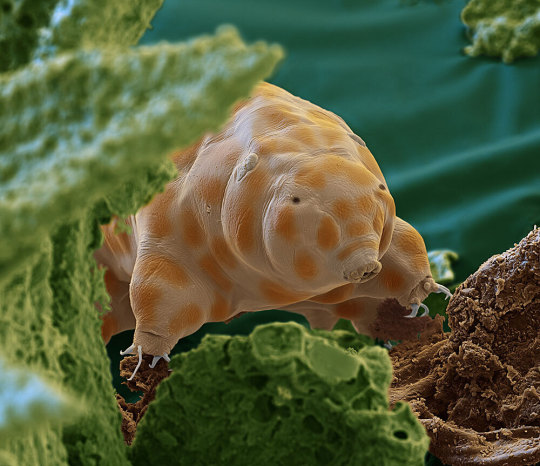
The newfound species seen here is one of about 1,300 known types of tardigrades. It was discovered in moss growing on dead tree trunks in Germany’s Black Forest. Far too small to see with the unaided eye, this creature is among billions of life-forms on the forest floor that are essential to the health of the planet. Magnified 2,400 times.
THESE TINY CREATURES ARE MARVELOUS
PHOTOGRAPH BY OLIVER MECKES AND NICOLE OTTOWA
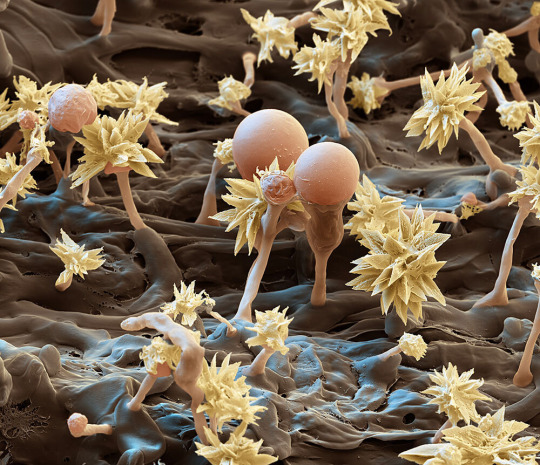
Fungi like this Resinicium bicolor—shown magnified 7,000 times—start breaking down dead trees by digesting lignin, the complex compound that helps form woody cell walls in plants.
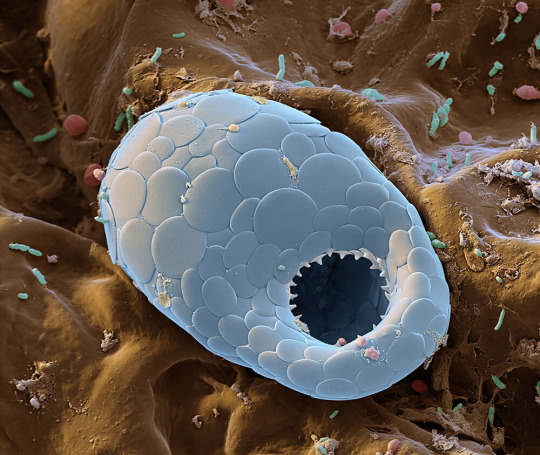
Scales of silica cover the single-celled body of a testate amoeba. These types of amoebas are named for the hard shells they create, possibly for protection against environmental changes within the forest litter.

Resembling a fairy’s gift basket, the fruiting body of a slime mold, magnified 400 times, releases spores from its perch on woody debris draped in fungal filaments. Slime molds feast on other microbes found in decaying plant

Some mycorrhizal fungi make their homes inside plant cells, as seen in this cross section of a European blueberry root. This allows soil residents of very different sizes to exchange nutrients—helping the forest
#oliver meckes#nicole ottowa#photographer#tardigrades#moss#germany#black forest#micro photography#nature#national geographic#fungi#resinicium bicolor#testate amoeba#slime mold#mycorrhizal fungi
640 notes
·
View notes
Photo



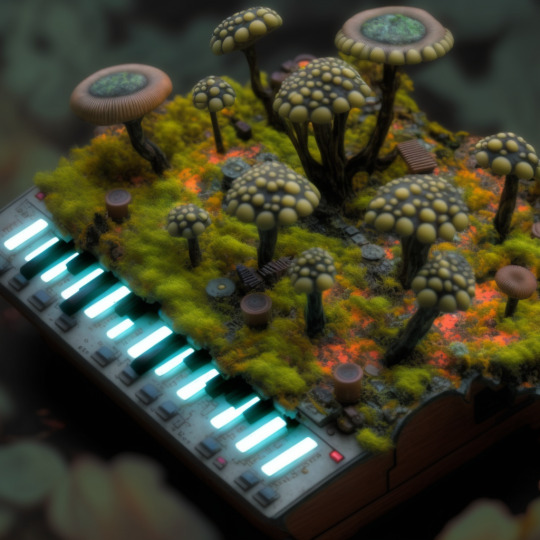





mycorrhizal midi controllers
#generative#mushrooms#midi controller#flush#unrealism#music#mycelium#mycorrhizal network#fungus#fungi#electronic music#gear#design#midi#midicontroller#drummachine#moss#shrooms#biophelia#life#sound#mushroom#biology#stuff#hybrid#unreality
977 notes
·
View notes
Text










Tagged by @luvwich and @streetkid-named-desire for this tomfoolery. Lmao
I have so many pictures of koalas and plants on my phone, you guys don't understand.
Tagging with no pressure: @elmknight @baublekute @mynonsenseistingling
@reilleclan-blog @punchthekeys @setaflow
#tag you're it#reindeer games#describe yourself only with pictures#here to share my baggie of mycorrhizal fungi#🐨🌿
11 notes
·
View notes